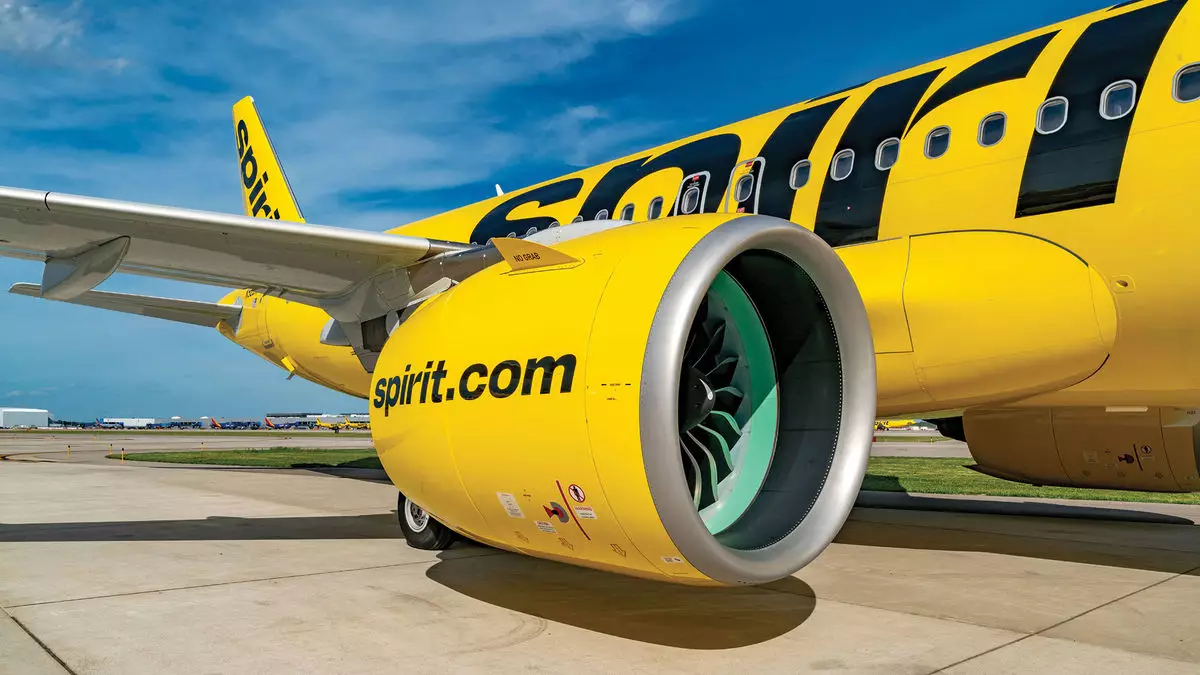The airline industry is on the cusp of a significant transformation as low-cost U.S. airlines strategize to carve out a more substantial presence in the expanding premium market. The traditional giants of air travel have commanded this space through their refined offerings and luxury amenities, prompting budget airlines to reevaluate their business models in response to the increasing demand for comfortable travel experiences. This article explores the upcoming developments in the airline industry, particularly focusing on the efforts of low-cost carriers in 2025.
Rising Premium Demand: Shifting Consumer Preferences
Since the pandemic, travelers’ expectations have evolved, favoring airlines that offer enhanced comfort and premium experiences. Major carriers, such as United and Delta, have thrived under these new consumer preferences, boasting profit margins that considerably surpass the industry average. This transition is prompting low-cost airlines to rethink their services, as they look to gain traction in a market that has historically been dominated by established players. Consequently, airlines like Southwest and Alaska are reconfiguring their fleets to include additional premium seating options which are anticipated to cater to the desires of both leisure and business travelers.
In an effort to establish themselves in the premium segment, low-cost carriers are making tactical adjustments to their offerings. Southwest is slated to introduce extra-legroom seats across its fleet next year, with a color-coded system to differentiate between standard and premium seats. Similarly, Alaska Airlines plans to enhance the passenger experience by retrofitting 218 narrowbody planes to include more first-class and extra-legroom seating. While the focus is on bolstering their premium offerings, these carriers still maintain their budget-friendly ethos, seeking to meet the needs of travelers who desire comfort without breaking the bank.
Frontier Airlines is also joining the fray by introducing first-class-style seating, aiming to attract a demographic that previously overlooked low-cost travel for fear of compromising on quality. The competitive landscape is shifting, suggesting that 2025 could be a turning point for budget airlines as they strive for differentiation in an increasingly saturated market.
Against this backdrop of growth and ambition, Spirit Airlines stands at a critical juncture. Entering 2025 in Chapter 11 bankruptcy, the carrier faces immense pressure to turn its fortunes around promptly. Following a prearranged debt restructuring, Spirit must address the losses it has incurred since 2020 to maintain its viability in the market. Analyst insights suggest that a merger with Frontier could be on the horizon, as both airlines share similar competitive landscapes and operational challenges.
The potential shift in Spirit’s operations could signify a broader trend among low-cost airlines, as industry players consolidate to reinforce their market positions amid rising competition. Balancing low fares with profitability will be Spirit’s primary challenge, necessitating a strategic reevaluation of its business model to attract new customers while still catering to its existing loyal base.
NDC Adoption and the Distribution Dilemma
As low-cost carriers pivot toward premium services, the distribution landscape is evolving. The concept of New Distribution Capability (NDC) is being eyed by several airlines as a modernization strategy, meant to bolster direct bookings and enhance travel agencies’ engagement. However, with American Airlines recently scaling back its aggressive approach to this transformation, experts caution that many travel management companies (TMCs) might hesitate to adapt to the emerging NDC framework.
This could lead to a reluctance to invest in new technologies, stifling innovation and progress in the sector. Industry analysts highlight the importance of seamless integration between traditional distribution methods and new technologies to promote widespread adoption. As travelers grow accustomed to new routes and expanded service offerings, they may not fully appreciate the underlying battles over distribution strategies between airlines and travel agencies.
While the premium market is heating up, travelers can anticipate a plethora of new international routes in 2025. Leading the charge is United Airlines, which will introduce services to previously untapped destinations including Greenland and Mongolia. This expansion reflects a positive shift in the airline’s strategy, aiming to meet growing international travel demands post-pandemic.
Analysts agree that the influx of new flights will likely enhance competition among airlines, driving prices down as supply increases to meet demand. As budget airlines gear up to offer upgraded services, travelers stand to benefit from an array of choices, creating a dynamic and competitive landscape in the airline industry.
As low-cost carriers adapt to the growing appetite for premium experiences, the airline landscape is set to undergo a significant transformation. With strategic moves from various players, the industry may soon witness a blending of affordability and comfort, catering to a diverse range of passenger preferences. The coming year will be pivotal in shaping how air travel evolves in the quest for both market share and profitability.


Leave a Reply